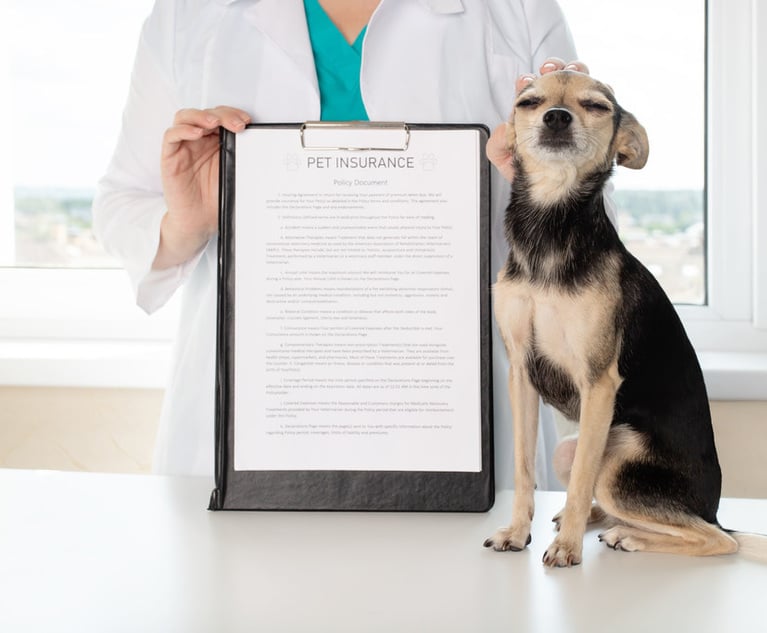 "They say that our relationships with pets have in one generation gone from the barnyard to the backyard to the bedroom," says Kristen Lynch, executive director at North American Pet Health Insurance Association. "If you go through a few serious medical conditions and have high veterinary costs, you're going to have a different view of the value for veterinary care and the cost of protecting yourself financially." Credit: yta/Adobe Stock
"They say that our relationships with pets have in one generation gone from the barnyard to the backyard to the bedroom," says Kristen Lynch, executive director at North American Pet Health Insurance Association. "If you go through a few serious medical conditions and have high veterinary costs, you're going to have a different view of the value for veterinary care and the cost of protecting yourself financially." Credit: yta/Adobe Stock
The North American pet insurance market saw gross written premiums increase 21.9% in 2023 to reach a record $4.27 billion, according to the North American Pet Health Insurance Association.
Recommended For You
Want to continue reading?
Become a Free PropertyCasualty360 Digital Reader
Your access to unlimited PropertyCasualty360 content isn’t changing.
Once you are an ALM digital member, you’ll receive:
- Breaking insurance news and analysis, on-site and via our newsletters and custom alerts
- Weekly Insurance Speak podcast featuring exclusive interviews with industry leaders
- Educational webcasts, white papers, and ebooks from industry thought leaders
- Critical converage of the employee benefits and financial advisory markets on our other ALM sites, BenefitsPRO and ThinkAdvisor
Already have an account? Sign In Now
© 2025 ALM Global, LLC, All Rights Reserved. Request academic re-use from www.copyright.com. All other uses, submit a request to [email protected]. For more information visit Asset & Logo Licensing.








